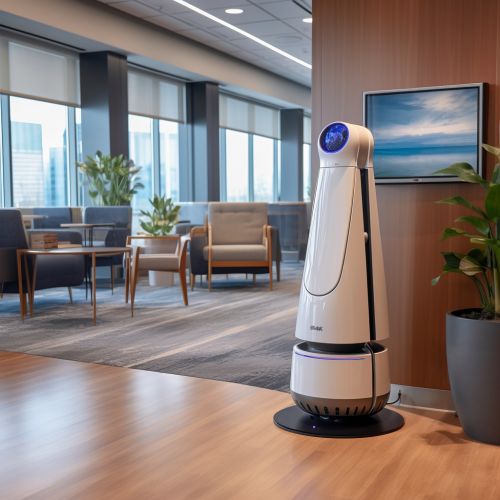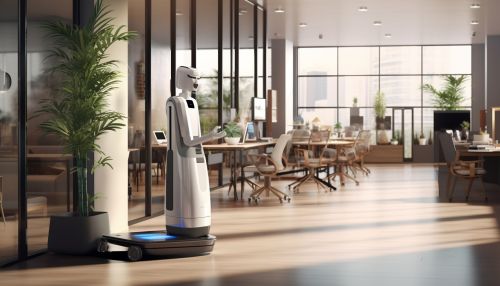Telepresence
Introduction
Telepresence refers to a set of technologies which allow a person to feel as if they were present, to give the appearance of being present, or to have an effect, via telerobotics, at a place other than their true location. Telepresence requires that the users' senses be provided with such stimuli as to give the feeling of being in that other location. Additionally, users may be given the ability to affect the remote location. In this sense, telepresence can be defined as being "present" at a distance.
History
The concept of telepresence was first introduced by Marvin Minsky in a 1980 article in Omni magazine. Minsky, a professor at the MIT, predicted that telepresence would become more common as technology advanced, allowing people to interact with distant environments without physically traveling to them.
Technologies
Telepresence technology includes a wide range of tools and systems, from simple video conferencing to complex robotic systems. These technologies are used in various fields, including medicine, education, entertainment, and business.
Video Conferencing
Video conferencing is one of the most common forms of telepresence. It involves the use of cameras, microphones, and screens to enable people in different locations to see and hear each other in real time. This technology is often used in business meetings, online classes, and social interactions.
Virtual Reality
Virtual reality (VR) is another form of telepresence. VR uses computer technology to create a simulated environment that users can interact with in a seemingly real or physical way. Users typically wear a VR headset, which presents them with a 360-degree view of a virtual world. Some VR systems also include handheld controllers or body suits that allow users to interact with the virtual environment.
Robotic Telepresence
Robotic telepresence involves the use of robots to extend a person's presence to a remote location. These robots, often referred to as telepresence robots, are equipped with cameras, microphones, and screens, allowing a user to see, hear, and interact with the remote environment. Some telepresence robots are also capable of movement, enabling the user to explore the remote location.
Applications
Telepresence has a wide range of applications in various fields.
Medicine
In medicine, telepresence technology is often used in telemedicine and telesurgery. Telemedicine involves the use of video conferencing and other telecommunication technologies to provide clinical health care at a distance. It helps eliminate distance barriers and can improve access to medical services that would often not be consistently available in distant rural communities.
Telesurgery, on the other hand, involves the use of robotic systems to perform surgical procedures. A surgeon controls the robotic system from a distance, allowing them to perform surgery on a patient without being physically present in the operating room.
Education
In education, telepresence technology is used to facilitate distance learning. This involves the use of video conferencing and other technologies to enable students and teachers to interact in real time, despite being in different locations. This can be particularly beneficial in rural or remote areas, where access to education may be limited.
Business
In business, telepresence technology is often used for remote meetings and conferences. This allows employees in different locations to communicate and collaborate effectively, without the need for travel. This can save time and reduce costs, while also enabling businesses to tap into a global workforce.
Challenges and Future Directions
Despite its many benefits, telepresence technology also poses several challenges. These include technical issues, such as latency and bandwidth limitations, as well as social issues, such as the potential for isolation and the loss of personal interaction. Additionally, there are also ethical and legal issues to consider, particularly in fields such as medicine and business.
Looking to the future, it is expected that advances in technology will continue to improve the quality and accessibility of telepresence. This includes developments in areas such as virtual reality, haptic technology, and artificial intelligence. As these technologies continue to evolve, so too will the possibilities for telepresence.


